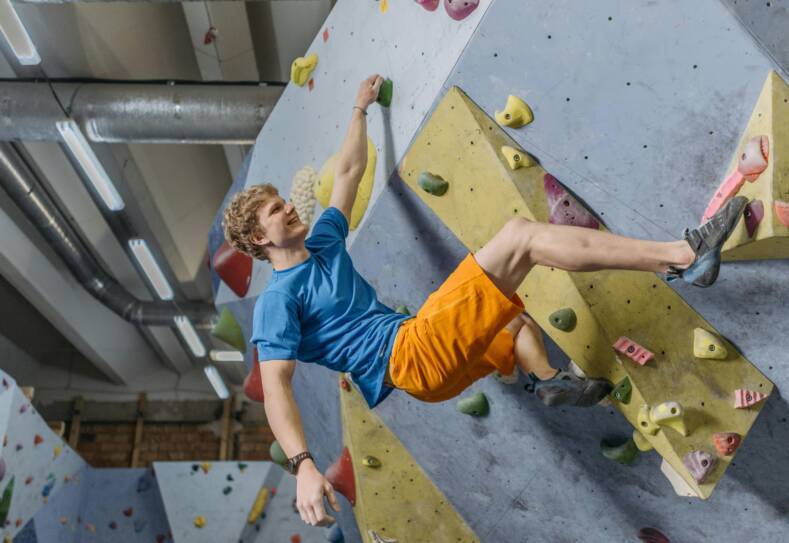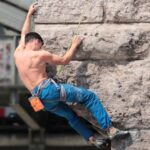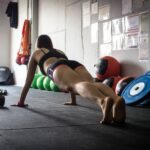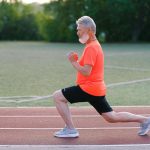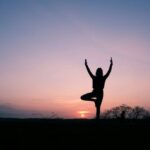Rock climbing demands a high level of physical fitness where balance plays a critical role. Climbers often find that honing their balance not only enhances their ability to maneuver on the rock but also contributes to overall strength, flexibility, and coordination. Committing to balance exercises can help climbers maintain their center of gravity and improve their footwork, two elements that are essential for efficient climbing.
Specific balance-focused activities, such as climbing with one leg or incorporating stability exercises off the wall, aid in developing the muscle groups required for this sport. When climbers train their balance, they are less likely to lose footing or require dynamic moves that can lead to unnecessary energy expenditure or falls. Thus, integrating balance exercises into regular climbing training schedules is a strategic approach to refining climbing technique.
Fundamentals of Balance for Climbing
Balance in climbing is a crucial skill that allows climbers to maintain stability and control while navigating routes. Center of gravity is the point where a climber’s mass is evenly distributed in all directions. Understanding and manipulating one’s center of gravity can greatly enhance balance and prevent falls.
To improve proprioception—the awareness of body position—climbers should practice drills that challenge their sense of stability. This bodily sense helps climbers to place their limbs confidently and accurately without constantly looking at them.
Stability on the wall comes from a solid base of support. Exercises that strengthen the core, hips, and legs can increase a climber’s ability to stay balanced in diverse positions. Coordination, the ability to use different parts of the body smoothly and efficiently, is essential for moving with grace and precision through complex sequences.
Consider the following table for balance-related exercises:
| Exercise | Focus Area | Benefits for Climbing |
|---|---|---|
| Plank Variations | Core Strength | Enhances overall stability. |
| Single-leg Deadlifts | Leg Strength, Proprioception | Improves unilateral balance and supports strong, controlled movements. |
| Yoga Balancing Poses | Proprioception, Coordination | Increases body awareness and control. |
Incorporating balance-focused activities, such as slacklining or balance boards, can also contribute to a climber’s proficiency. Climbers should aim to integrate balance training into their regular workout regimen to see continuous improvement in their climbing abilities.
Developing Core Strength
The core is essential for climbers, acting as the center of strength and stability. A robust core allows a climber to maintain balance and control during complex maneuvers on the wall. This section focuses on how climbers can enhance their core strength through targeted exercises and stabilizing workouts.
Core Training
Hangboard Leg Lifts:
A climber can begin by hanging from a pull-up bar or hangboard with their arms straight and shoulders engaged. By lifting the legs to form a 90° angle at the hips, while keeping them straight, the climber works the entire core, particularly the lower abdominals.
- Execution:
- Arms straight, shoulders engaged.
- Lift legs without bending the knees to form a 90° hip angle.
- Lower back down with control to minimize swinging.
Plank Variations:
Incorporating full-body workouts such as planks can significantly increase core strength and stability.
- Straight-Arm Plank Rotation:
- Begin in a straight-arm plank position.
- Tighten the core and glutes.
- Rotate the torso and extend one arm towards the sky then back down.
- Alternate sides.
- Plank Glute Kick:
- Maintain a straight-arm plank.
- Engage the core while lifting one leg upwards, keeping it straight.
Pro-Tip: To optimize core training, climbers should strive to maintain good form and progressively increase the difficulty of the exercises.
Stabilizing Exercises
Dynamic Leg Raises:
Engaging in exercises that challenge the core’s ability to stabilize the body is vital for balance on the wall.
- Technique:
- Lie on the back on a carpet or exercise mat.
- Raise legs until the lower legs are parallel to the ground.
- Execute controlled circular motions with the hips.
Supine I-Y-Ts:
Strengthening the upper body in conjunction with the core is beneficial for overall control on climbing routes.
- Method:
- Lie face up and perform arm movements in the shape of an ‘I’, ‘Y’, and ‘T’.
- Repeat for 3-4 sets with short rest periods.
When these exercises are performed consistently and with proper form, they enhance the climber’s core strength significantly, providing the necessary stability for efficient and safe climbing.
Lower Body Exercises
In climbing, the lower body’s strength and coordination are paramount for efficiency and performance. Specific exercises and footwork techniques improve climbers’ power in their legs, stability in their movements, and precision in their foot placements.
Leg Workouts
Single-leg Squats are beneficial for climbers as they mimic the action of high stepping on small holds. They target the quadriceps, hamstrings, and glutes. When performing a single-leg squat, one should keep their chest up and focus on a slow descent with the non-working leg extended forward. The climber should then push through the heel to return to the starting position, ensuring that the knee stays aligned with the toe.
Bulgarian Split Squats: This exercise emphasizes the hamstrings and glutes. The climber places one foot behind them, elevated on a surface such as a bench or stair, and performs a squat with the other leg. The movement should be controlled, especially when returning to the starting position to engage the supporting muscles effectively.
Footwork Techniques
Precise Foot Placement: Climbers should practice placing their feet accurately on small areas, mimicking the size of holds found in climbing. This improves balance and control, engaging the leg muscles, particularly around the ankles and calves.
Heel Hooks: This technique involves hooking the heel on a hold to take weight off the hands. When practicing heel hooks, climbers should focus on engaging their hamstring and glute muscles, which provides stability and allows for a more restful position on the wall.
By incorporating these leg workouts and footwork techniques, climbers can develop stronger, more adept legs, bolstering their climbing abilities. The focus should always be on form and control to maximize benefits and reduce the risk of injury.
Upper Body Conditioning
Upper body strength is crucial for climbers, as they constantly engage their arms, shoulders, and upper back muscles during a climb. The following exercises focus on enhancing arm strength and shoulder stability, which are vital for maintaining balance and control on the rock face.
Arm Strengthening
For climbers, robust arm muscles such as the biceps and triceps play a significant role in ascending routes efficiently.
- Pull-ups: A staple in climbers’ workouts, they target the biceps, lats, and forearms. Climbers should aim for 3 sets of 4 to 6 reps.
- Hammer Curls: This exercise emphasizes the biceps and forearms, helping with grip strength. A good regimen would be 3 sets of 12 to 14 reps.
These exercises contribute to the power necessary for movements like dynamic reaches and sustained holds.
Shoulder Stability
Shoulders are the pivotal points of upper body movement in climbing, thus requiring solid stability to prevent injuries.
- Rowing: An excellent compound exercise, rowing engages the deltoids, rhomboids, and trapezius. It promotes both strength and endurance in the shoulder girdle.
- Swimming: An alternative low-impact option that builds shoulder stability through resistance while also increasing overall upper body strength.
Incorporating these exercises into a climber’s training routine will aid in developing a balanced musculature, particularly essential for maneuvers that rely on upper body control.
Training Tools and Techniques
Optimizing one’s climbing ability requires a strategic approach to training, incorporating specific tools and routines designed for improving balance and strength. These exercises not only enhance performance on the rock face but also contribute to a climber’s overall fitness and injury prevention.
Effective Use of Climbing Equipment
One fundamental tool in a climber’s training arsenal is the hangboard. This equipment is pivotal for developing grip strength and finger endurance. Climbers should integrate hangboard routines into their training schedule, systematically increasing difficulty by varying hold sizes and shapes. When starting out, it is crucial to prioritize form and time spent on the board, rather than the intensity of the exercises.
A pull-up bar is an invaluable tool as well, essential for building upper body and core strength. Incorporating pull-ups with an overhand grip can mimic the muscle engagement required during climbs. Climbers can increase the challenge by wearing a weight vest or using a resistance band to assist if necessary.
Incorporating Fitness Accessories
Fitness accessories like resistance bands or Therabands are excellent for antagonistic muscle training, ensuring overall muscle balance. Exercises such as reverse flys or shoulder external rotations can prevent common climbing injuries. These accessories can be easily used at home or at the climbing gym as part of a comprehensive training routine.
The use of a BOSU ball can significantly improve a climber’s balance and core stability. Balance drills atop the BOSU ball, ranging from squats to single-leg stands, train the body to maintain control on uneven surfaces, much like those encountered on real rock climbs.
For flexibility and injury prevention, incorporating yoga into one’s schedule is highly effective. Yoga practices emphasizing stability and core control can directly translate to improved performance on climbing routes, as they enhance body awareness and flexibility.
Advanced Climbing and Bouldering Techniques
To excel in advanced climbing or bouldering, climbers must refine their technique and balance, employing strategic movements and body positions to navigate climbs efficiently.
Boulder Climbing
In boulder climbing, technique and body positioning are paramount. Advanced climbers focus on:
- Rest: To achieve peak performance, climbers should boulder when well-rested as it involves powerful, gymnastic moves.
- Footwork: Precise foot placement is vital, often using just the tips of toes on holds.
Advanced techniques commonly used by boulderers include:
- Flagging: Extending a leg out to counterbalance a move, important for maintaining stability.
- Dynamic movements: Involving jumps and leaps to reach holds.
Technique drills for bouldering might involve:
- Tracking exercises: Climbing routes without letting feet cut loose from the wall.
- Silent feet: Focusing on placing feet quietly to improve precision.
Mastering Climbing Movements
For rock climbers, enhancing climbing performance involves honing advanced techniques like:
- Side planks: Practiced off the wall to improve core strength for better balance and control.
- Balance Training: Engaging in exercises that target stability, such as using a slackline or balance board during workouts.
Climbers often work on:
- Opposition: Using body tension by pushing against holds in different directions to stay close to the wall.
- Controlled breathing: To maintain calmness and increase focus during complex sequences.
Training tips include:
- Training with climbers at a higher skill level to learn new movements.
- Transitioning from indoor to outdoor climbing to broaden experience and athleticism.
Injury Prevention and Recovery
Injury prevention and recovery in climbing hinge on targeted exercises for key muscle groups. The focus on the rotator cuff and comprehensive rehabilitative workouts aids climbers in maintaining strength and reducing the risk of strain.
Rotator Cuff Exercises
The rotator cuff is crucial for shoulder stabilization during climbing. Specific exercises tailored for these muscles can both prevent injury and aid in recovery:
- External Rotation
- Stand with the affected arm close to the body, elbow at a 90-degree angle
- Rotate the wrist outward two to three inches and hold for 5 seconds
- Repeat 10-15 times for 2-3 sets
- Internal Rotation
- Similar to external rotation, but rotate the wrist towards the body
- Use a light resistance band or weight as needed
- Perform the same number of repetitions and sets as external rotation
Rehabilitative Workouts
Rehabilitative workouts focus on full-body recovery, emphasizing balance between climbing muscles (e.g., back, chest) and their antagonists. A personal trainer experienced in climbing can individualize the regimen.
- General Back and Chest Balance
- Back: Incorporate rows and reverse flys to strengthen upper and middle back
- Chest: Execute push-ups and chest press, ensuring the chest does not overpower the back
- Antagonist Muscle Strengthening
- Use exercises like wrist curls and reverse wrist curls to balance forearm muscles
- Perform exercises in sets of 12-15 repetitions, ensuring even development
These exercises not only support injury rehabilitation but also contribute to a well-rounded fitness base, effectively preventing future injuries.
Mental and Decision-Making Skills
Climbers require a blend of mental strength and decision-making skills to navigate routes effectively. The ability to maintain balance under pressure is crucial, as is executing the right technique under varying circumstances. Focus is another key aspect; climbers must concentrate on each move, foreseeing the sequence to maintain endurance and safety.
The role of a trainer can be instrumental here, helping climbers build decision-making acumen through structured exercises that simulate challenging situations. Through practice, individuals learn to trust their judgment, which is essential for any level of the route, whether it requires considerable fitness levels or more strategic footwork for balance.
Here are specific aspects of mental training for climbers:
Decision-Making:
- Evaluate risks
- Choose appropriate techniques
- Adapt to the rock face quickly
Mental Endurance:
- Push through challenging sections
- Maintain concentration for long periods
- Develop resilience against setbacks
A climber’s regimen should include mental training exercises that enhance these skills. This sets a foundation for overcoming both physical and mental obstacles, making each climb not only a test of physical ability but also a demonstration of mental fortitude and sharp decision-making.
